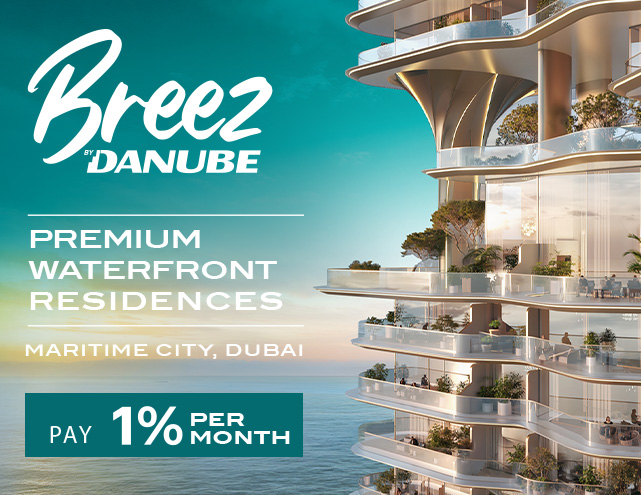Dubai’s property market in 2025 continues its record-breaking momentum, but discerning what percentage of transactions are driven by end-users versus investors is essential for any stakeholder. In this article, we address the core question: What percentage of Dubai property transactions in 2025 are end-users versus investors? By analyzing current trends, government policy, and transactional data, we clarify the market’s evolving dynamics and offer actionable insights for investors and homebuyers alike.
Understanding the Dubai Property Market: End-User vs. Investor Dynamics
Dubai’s real estate sector has traditionally been recognized as an investor’s haven, attracting both regional and global capital. However, 2025 marks a pivotal phase in the transition from an ultra-high-net-worth exclusive market to a landscape open to first-time buyers, families, and middle-income earners. Record transaction values—exceeding AED 431 billion in H1 2025, up 25% year-on-year—signal surging demand from all buyer segments.
While detailed breakdowns fluctuate by quarter, industry consensus for 2025 estimates that approximately 60% of transactions are being completed by investors—both local and international—while around 40% are attributed to genuine end-users seeking primary residences. This balance is influenced by robust investor confidence coupled with the growing accessibility of home ownership for residents and expatriates.
The rise of off-plan sales in 2025 further skews these numbers, as investors remain the primary drivers of off-plan project uptake, lured by attractive payment plans, flexible terms, and strong medium-term growth prospects.
Key Factors Influencing End-User and Investor Behavior in Dubai
Multiple factors are shaping how both investors and end-users approach Dubai’s market:
- Rental Yields and Capital Appreciation: Dubai continues to outperform global peers in rental yields and price growth, attracting institutional and high-net-worth investors targeting long-term returns.
- Accessible Finance and Payment Plans: Developers now offer more flexible payment options, attracting a broader demographic of end-users—including younger professionals and families.
- Lifestyle, Infrastructure, and Visa Reforms: End-users are drawn to vibrant communities, proximity to metro stations, and the security of UAE’s long-term residency visas, which encourage property purchase for personal use.
- Global Uncertainty: Amid economic turbulence elsewhere, international investors increasingly view Dubai as a “safe haven.”
These factors combine to create a sophisticated buyer landscape, with some buyers even straddling both camps—purchasing as residents for immediate use, but with an eye to future investment value.
Projected End-User vs. Investor Split for Dubai Property in 2025
So, what is the forecasted split between end-users and investors in Dubai’s property transactions for 2025? Industry data and recent market reports suggest the trend is leaning towards a 60:40 split in favor of investors. Off-plan properties in prime areas such as Business Bay, Jumeirah Village Circle, and Dubai Marina are particularly attractive among investors, representing the bulk of high-volume transactions. Meanwhile, end-users are more active in the ready home segment and established family-friendly districts such as Arabian Ranches and Mirdif.
Despite shifts in global economic sentiment, Dubai’s real estate sector’s momentum is upheld by both segments. Notably, end-user participation is predicted to rise gradually if affordable housing supply continues to expand and mortgage rates remain stable.
Local vs. International Investor Example
In the ongoing off-plan boom, the distinction between local and international investor demand is narrowing. Recent project launches have seen units snapped up within hours—a clear testament to intense investor appetite, regardless of origin. This is particularly noticeable in branded residences and waterfront communities along the Dubai Water Canal.
Analyzing the Impact of Supply and Demand on Market Composition
Dubai’s continual launch of new off-plan projects underpins market liquidity and sustains strong investor demand. At the same time, a consistent flow of ready homes, villa communities, and apartments in established areas stabilizes end-user participation. High absorption rates in both segments keep inventory relatively balanced and minimize speculative risk—essential in attracting long-term residents and retaining investor interest.
Government Initiatives and Their Role in Shaping Property Ownership
Reforms such as the expansion of the UAE Golden Visa, retirement schemes, and developer incentives reinforce Dubai’s appeal for both end-users and investors. These initiatives have effectively lowered barriers to home ownership and stimulated consistent demand, further blurring the traditional lines between pure investment and residence-driven buyers.
Investment Hotspots and End-User Preferences in Dubai
While investors favor areas like Downtown Dubai, Dubai Creek Harbour, and off-plan launches near Expo City and metro extensions, end-users gravitate toward communities renowned for schools, healthcare, and green spaces—such as Dubai Hills Estate and Springs. These preferences shape pricing trends and rental demand across the city.
Future Outlook: Strategic Implications for Buyers and Developers
As we move through 2025, Dubai’s property market demonstrates a healthy mix of investor and end-user activity. The evolving 60:40 investor-to-end-user split is likely to persist, though a gradual increase in genuine homebuyers is anticipated as visa reforms and affordable inventory widen.
In conclusion, about 60% of Dubai property transactions in 2025 are projected to be investor-driven, with 40% from end-users. Both groups are indispensable to Dubai’s dynamic real estate growth story. For tailored property opportunities, contact Danube Properties to learn more about your ideal fit in the market.




